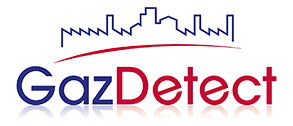
The risks associated with the use of gases in the pharmaceutical industry call for strict preventive measures, both in terms of installations and employee training. Gas detection systems (fixed and portable), ventilation, protective equipment and appropriate procedures are essential to protect both workers and the quality of pharmaceutical products.
The following is a detailed development of the protective measures applicable to the various risks associated with the use and handling of gases in the pharmaceutical industry, focusing on the essential aspects of preventive and safety measures.
Anoxia risks in the pharmaceutical industry
Nitrogen (N2), argon (Ar) and carbon dioxide (CO2) are often used to inert tanks or vessels in pharmaceutical production. This avoids the presence of oxygen, thus reducing the risk of undesirable reactions with oxygen-sensitive pharmaceutical products. However, these gases replace oxygen in ambient air, which can lead to anoxia in confined spaces.
The installation of oxygen detectors (oxygen meters) enables real-time monitoring of the concentration in the ambient air. If oxygen levels fall below 19.5%, an alarm must be triggered to alert responders. An adequate ventilation system, combined with localized extraction of gases in areas where they are used or released, is crucial to maintaining a safe concentration of oxygen.
In hazardous areas, or when working in confined spaces, emergency evacuation devices (self-rescuer masks, rescue and evacuation SCBAs) must be worn if a lack of oxygen is detected, and self-contained breathing apparatus (SCBAs) must be worn when working in hazardous areas.
They must also be trained in the dangers of anoxia and the procedures to be followed when working in confined spaces (wearing PPE, entry and exit protocol, etc.).
![]()
Toxic gases in the pharmaceutical industry
Toxic gases such as chlorine (Cl2), ethylene oxide (C2H4O) and hydrogen peroxide (H2O2) are used in sterilization and purification processes. For example, ethylene oxide is an effective sterilizing agent for medical and pharmaceutical equipment. Hydrogen peroxide is commonly used in sterilization chambers to remove microbial contaminants from equipment and surfaces.
These gases can cause serious health damage if released into the working environment. Effects include respiratory tract irritation, organ damage, and in some cases, fatal poisoning. Toxic gas detectors should be installed to continuously monitor the presence of toxic gases in areas where these substances are used.
An extraction system at the point of emission, especially in workplaces using volatile solvents, is essential to reduce worker exposure.
Workers must wear air purifying respirators, chemical-resistant gloves and goggles when handling toxic gases. In the event of leaks or accidental emissions, containment systems must be put in place to limit their spread in the working environment.
Corrosive gases in the pharmaceutical industry
Certain gases, such as ammonia (NH3), paracetic acid (C2H4O3), and formaldehyde (CH2O) - more commonly known in its liquid form, formalin - can be used for disinfection in the pharmaceutical industry. Peracetic acid (or peroxyacetic acid, PAA) is mainly used to clean and disinfect production equipment, including tanks, reservoirs, production lines and work surfaces. It is particularly effective against a broad spectrum of micro-organisms, including bacteria, viruses, spores and fungi.
Corrosive gas detectors should be installed to monitor air concentrations. Alarm systems must be configured to warn immediately if dangerous levels are reached. Pipes, tanks and equipment exposed to corrosive gases must be made of corrosion-resistant materials (e.g. stainless steel or anti-corrosion coatings).
Employees must wear chemical protective clothing (overalls, neoprene or rubber gloves, goggles, masks) to protect against the corrosive effects of gases. Safety showers and eyewash stations should be available nearby. The installation of localized evacuation systems helps to extract them from workspaces before they reach dangerous concentrations.
![]()
Risks of gas contamination
In the pharmaceutical industry, contamination of products by gases or sterilizing agents can have serious consequences, affecting drug quality and endangering personal safety. Installing air filtration systems in sterile environments (HEPA filters) helps to maintain contamination-free zones. Cleanrooms must be under positive pressure to prevent outside contaminants from entering.
Confined, ventilated sterilization chambers must be used to handle gases such as ethylene oxide. Leak detection systems must be installed to prevent the accidental release of these gases into production areas. Operators handling sterile substances must wear sterile coveralls, gloves, masks and shoe covers to avoid introducing microbial or chemical contaminants.
Chemical interaction risks in the pharmaceutical industry
Reactive gases, such as chlorine or certain solvents, can react dangerously with other chemicals present on site. These reactions can lead to explosions, fires or the formation of toxic substances. Reactive gases must be stored and used separately from other incompatible substances (e.g. chlorine must be isolated from volatile organic compounds). This may include special cabinets or storage areas.
The risks associated with the use of gases in the pharmaceutical industry call for strict preventive measures, both in terms of installations and employee training. Gas detection systems, ventilation, protective equipment and appropriate procedures are essential to protect both workers and the quality of pharmaceutical products.

